The Center for Science and Engineering of Living Systems brings together PIs from the basic sciences, medicine and engineering who work in concert on integrating innovation with intellectual curiosity and discovery with engineering.
Leadership
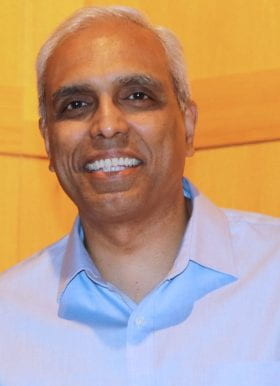
Rohit Pappu
Director, Edwin H. Murty Professor of Engineering
- Email: pappu@nospam.wustl.edu
Rohit Pappu’s lab studies polymeric phase transitions, as well as molecular-level order-disorder transitions to uncover the physical principles underlying spatial and temporal organization of proteins and nucleic acids within cells, the connections between protein phase separation and aggregation in the context of neurodegenerative disorders such as Huntington’s disease and ALS, and the form and functions of so-called intrinsically disordered proteins. Their discoveries are driven by development and deployment of tools from the fields of polymer physics, equilibrium and non-equilibrium statistical physics, computational biophysics, biochemistry, and molecular engineering. Their goal is to uncover fundamental insights regarding biological processes at the molecular and cellular level and leverage these insights into cures for neurodegenerative disorders and cancers as well as applications in materials science and synthetic biology.
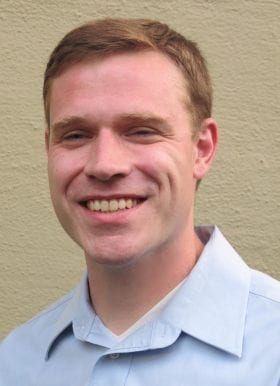
Greg Bowman
Associate director; assistant professor of biochemistry and molecular biophysics, School of Medicine; affiliated professor of chemistry
- Email: g.bowman@nospam.wustl.edu
The Bowman lab seeks to understand how protein dynamics gives rise to functional processes like allosteric communication between distant sites, and to exploit our insight into this shape-shifting to design new drugs and proteins. Examples of current applications include 1) understanding how mutations allosterically impact distant sites to confer bacteria with antibiotic resistance, 2) identifying ‘cryptic’ pockets that are absent in available structures, and 3) designing allosteric inhibitors of the Ebola virus that bind cryptic pockets. To achieve these ends, we combine biophysical experiments, physics-based simulations, and machine learning. We also run a worldwide distributed computing platform called Folding@home.
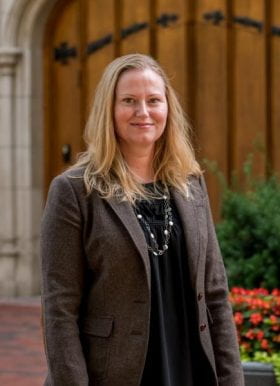
Lucia Strader
Associate director, Associate professor of biology
- Email: strader@nospam.wustl.edu
Current research in Lucia Strader’s lab focuses on several projects using the model plant Arabidopsis thaliana. Strader’s research is elucidating the relationships between the plant hormones auxin, abscisic acid (ABA), and ethylene, determining the role of the auxin precursor indole-3-butyric acid (IBA) in plant development, and understanding the establishment of the Outer Lateral Domain of plant cells. Animals require cell movement to determine the final form of organs. Because there is no morphogenic cell movement in plants, and because the cell wall is usually formed immediately after cell division, plant morphogenesis depends upon careful control of both cell division and cell expansion. The auxin indole-3-acetic acid (IAA) is a critical plant hormone, controlling both cell division and cell expansion and thereby orchestrating many developmental events and environmental responses.
Normal plant morphogenesis and environmental responses require modulation of auxin levels and responsiveness by interaction with other hormones, controlling biosynthesis, regulating transport, and managing storage forms. One auxin storage form of interest to the Strader lab is the side chain-lengthened compound indole-3-butyric acid (IBA), which is shortened into IAA by peroxisomal β-oxidation.
Principal Investigators
Engineering
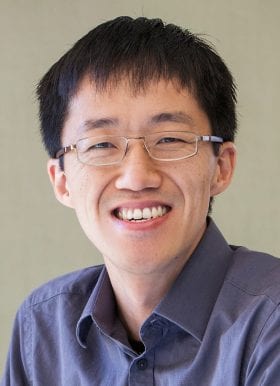
Matthew Lew
Assistant professor of electrical and systems engineering
- Email: mdlew@nospam.wustl.edu
Matthew Lew’s lab builds advanced imaging systems to study biological and chemical systems at the nanoscale. Our technology leverages innovations in applied optics, signal and image processing, design optimization, and physical chemistry. The lab develops advanced nanoscopes (microscopes with nanometer resolution) that can visualize the activity of individual molecular machines inside and outside living cells. Examples of our technology include using tiny fluorescent molecules as sensors that can detect amyloid proteins, designing new “lenses” to create imaging systems that can visualize how molecules move and tumble, and new imaging software that minimizes artifacts in super-resolution images.
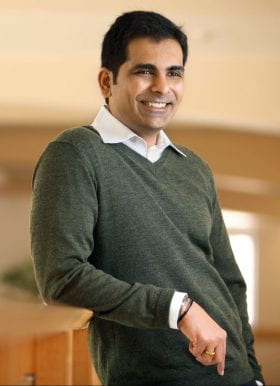
Barani Raman
Dennis & Barbara Kessler Career Development Associate Professor
- Email: barani@nospam.wustl.edu
Barani Raman’s research interests include computational and systems neuroscience, pattern recognition, sensor-based machine olfaction and bio-inspired intelligent systems. His research combines theoretical and electrophysiological approaches to study how brain processes complex sensory signals (especially the olfactory cues), and to identify fundamental principles of neural computation. In parallel, he is also involved with the development of novel neuromorphic devices (such as an ‘electronic nose’) and algorithms that have potential applications in biomedical, homeland security, robotics and human computer interaction domains.
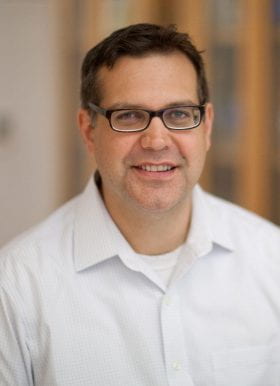
Jon Silva
Associate professor of biomedical engineering
- Email: jonsilva@nospam.wustl.edu
Jon Silva’s lab is focused on applying engineering approaches to improve clinical outcomes for cardiac arrhythmia patients. Current projects include new ways to identify patients who will respond to small molecule therapies and finding patients whose hearts will be at risk when undergoing cancer therapy. To gain new insights, the lab develops new methods to watch the proteins the generate the heartbeat, create tissue engineered models to test how therapies interact, and develop computer algorithms to predict patient outcomes.

Srikanth Singamaneni
Professor of mechanical engineering and materials science
- Email: singamaneni@nospam.wustl.edu
Srikanth Singamaneni’s lab designs and synthesizes novel plasmonic nanostructures and assemblies that greatly enhance Raman scattering and fluorescence of various (bio)chemical species in proximity to the nanostructures. The nanostructures can be tailored to sense and report specific (bio)chemical stimuli or molecular processes in both extra- and intracellular environments. The nanostructures also serve as ultrabright biolabels (nearly four orders of magnitude brighter than conventional fluorophores) that enable the detection and quantification of low-abundance biomolecules secreted by cells or present on the cell surface. These advanced bioanalytical tools that harness the ability to confine and manipulate light at the nanoscale using plasmonic nanostructures are highly attractive for comprehensive characterization of complex and non-linear living systems.
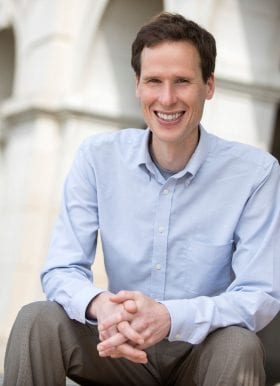
Michael Vahey
Assistant professor of biomedical engineering
- Email: mvahey@nospam.wustl.edu
Virally-transmitted infectious diseases pose tremendous burdens on human health. Michael Vahey’s lab’s goal is to understand the physical and biological factors that guide the assembly, transmission, and replication of enveloped viruses, with the long-term objective of targeting and repurposing these processes to develop new therapeutics. Using an interdisciplinary approach that spans multiple scales, the group is working to understand how individual molecules collectively give rise to the characteristics of a virus, and how these characteristics determine the virus’s ability to propagate under the constraints found in cells, tissues, and organisms.
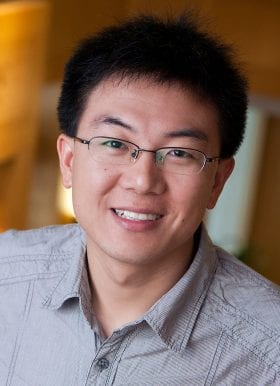
Fuzhong Zhang
Associate professor of energy, environmental and chemical engineering
- Email: fzhang@nospam.seas.wustl.edu
At the Fuzhong Zhang lab, researchers are interested in using synthetic biology to revolutionize biomanufacturing. They engineer microbial systems to produce advanced biofuels that can be directly used in current engines without supplementation, to produce novel high-performance materials that have properties and functions not achievable by natural and chemically-synthetic materials, and to produce chemicals from renewable feedstock (e.g. lignocellulosic biomass). Meanwhile, to better design biology, the lab develops biological control systems to regulate complex microbial behaviors, including dynamic metabolite sensing and regulation, population heterogeneity and single cell behaviors.
Biochemistry and Molecular Biophysics
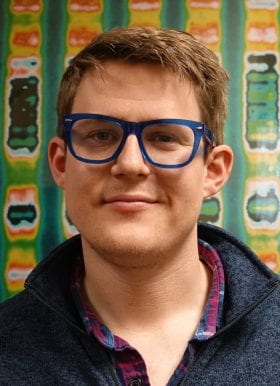
Alex Holehouse
Assistant professor of biochemistry and molecular biophysics, School of Medicine
The Holehouse lab explores how intrinsically disordered protein regions confer biological function and how this goes wrong in disease. The lab integrates physics-based models (all-atom and coarse-grained simulations) with informatics and machine learning to develop sequence-specific predictions. We then test those predictions either within the lab, or with collaborators around the world.Of particular interest is understanding how disordered proteins drive self-assembly in the context of biological phase separation, with a major emphasis on understanding when, how, and why this might be important for normal cellular function.
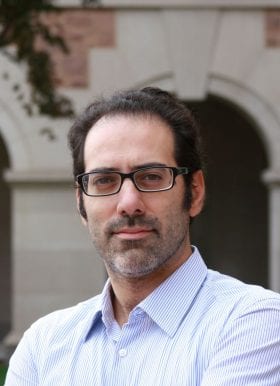
Andrea Soranno
Assistant professor of biochemistry and molecular biophysics, School of Medicine
- Email: soranno@nospam.wustl.edu
Andrea Sorrano’s main research interests are the physical principles and molecular mechanisms determining biomolecular function. A particular focus are intrinsically disordered proteins (IDPs). In his lab, they combine fluorescence single-molecule spectroscopy with concepts from polymer physics to explain fundamental properties of disordered proteins, such as the role of electrostatic interactions, ion screening and macromolecular crowding on their conformations, as well as the contribution of internal friction to their dynamics. They are particularly interested in developing new tools to investigate the role of disordered proteins in intracellular phase transitions.
Biology
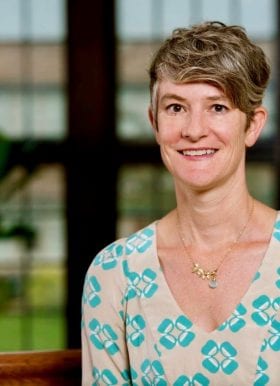
Elizabeth Haswell
Associate professor of biology
- Email: ehaswell@nospam.wustl.edu
Elizabeth Haswell’s research group aims to identify the molecular and cellular mechanisms by which cells sense and respond to physical forces. They study the structure, function, regulation, and evolution of mechanosensitive ion channels in the green lineage, using molecular genetics, single-channel patch clamp electrophysiology, live-imaging, and computational modeling approaches. They are also engaged in functional and genetic screens designed to identify novel mechanosensory proteins, and in the development of new tools for the non-invasive analysis of membrane forces.
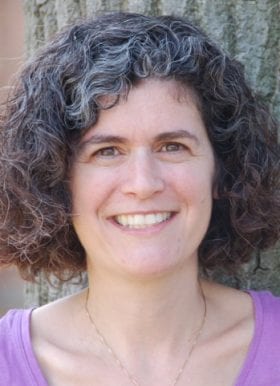
Petra Levin
Professor of biology
- Email: plevin@nospam.wustl.edu
Petra Levin’s research focuses on the impact of the environment on bacterial growth and physiology. Nutrient-dependent increases in cell size are a primary area of interest. Researchers are also working with the Pappu group to illuminate the mechanisms controlling assembly of the cell division protein, FtsZ. They have recently begun to investigate the environmental and physiological factors that allow bacteria to withstand high concentrations of antibiotics. These factors include the widely used antimicrobial, triclosan and even modest changes in pH.
Chemistry
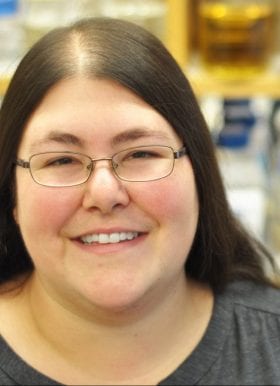
Meredith Jackrel
Assistant professor of chemistry
- Email: mjackrel@nospam.wustl.edu
Proteins must fold properly in order to function. When protein misfolding occurs, severe problems can arise. Protein misfolding underpins many devastating diseases including amyotrophic lateral sclerosis, Parkinson’s disease and Alzheimer’s disease. Meredith Jackrel’s lab is interested in understanding how protein misfolding occurs and how it can lead to disease. They are particularly interested in protein disaggregases, which can prevent and even reverse protein misfolding, solubilizing protein accumulations that are otherwise intractable. They aim to better understand how protein disaggregases solubilize such highly stable species. Additionally, they are employing various protein engineering techniques in order to fine-tune the properties of protein disaggregases.
Developmental Biology
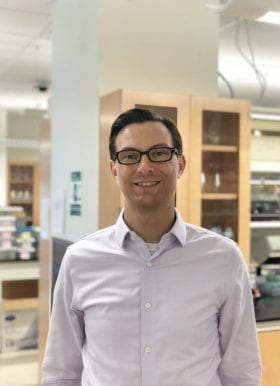
Zachary Pincus
Assistant professor of developmental biology and genetics, School of Medicine
- Email: zpincus@nospam.wustl.edu
From human twins to the products of division of a single bacterium, genetically identical organisms often develop into very different individuals and experience different life histories, even in identical environments. Such differences and other instances of so-called non-genetic individuality are the focus of Zachary Pincus’ lab.
They primarily use variability in C. elegans lifespan as a metazoan model for understanding noise control, homeostatic robustness and biological individuality. Overall, the lab hopes to understand why and how some individuals age more successfully than others.
Physics
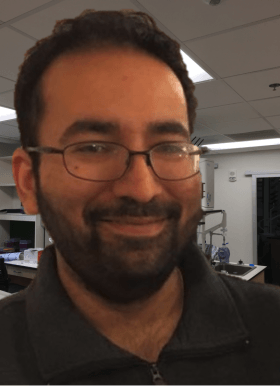
Shankar Mukherji
Assistant professor of physics
- Email: smukherji@nospam.wustl.edu
Among the defining features of the eukaryotic cell is its organization into spatial compartments known as organelles. Organelles occupy a key position in the cellular economy, as both leading producers and consumers of the metabolic products critical to cellular growth, maintenance, and development. In our group, we use a combination of quantitative experiment and mathematical methods derived from statistical physics and computer science to address fundamental questions in cell biology: What are the principles by which the cell allocates resources to its organelles? How does the physiology of the cell emerge from its organelle composition?
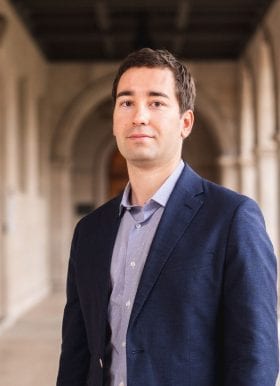
Mikhail Tikhonov
Assistant professor of physics
- Email: tikhonov@nospam.wustl.edu
Mikhail Tikhonov is interested in how function and information in living systems is compartmentalized and hierarchically structured across scales. He would like to know if ecological, evolutionary and regulatory phenomena could be described by the same mathematics. While much of his research focuses on the scales of an organism or community, he is intrigued by the parallels between the spatial organization of multispecies consortia and the enzyme localization shaping metabolic efficiency of sub-cellular components.